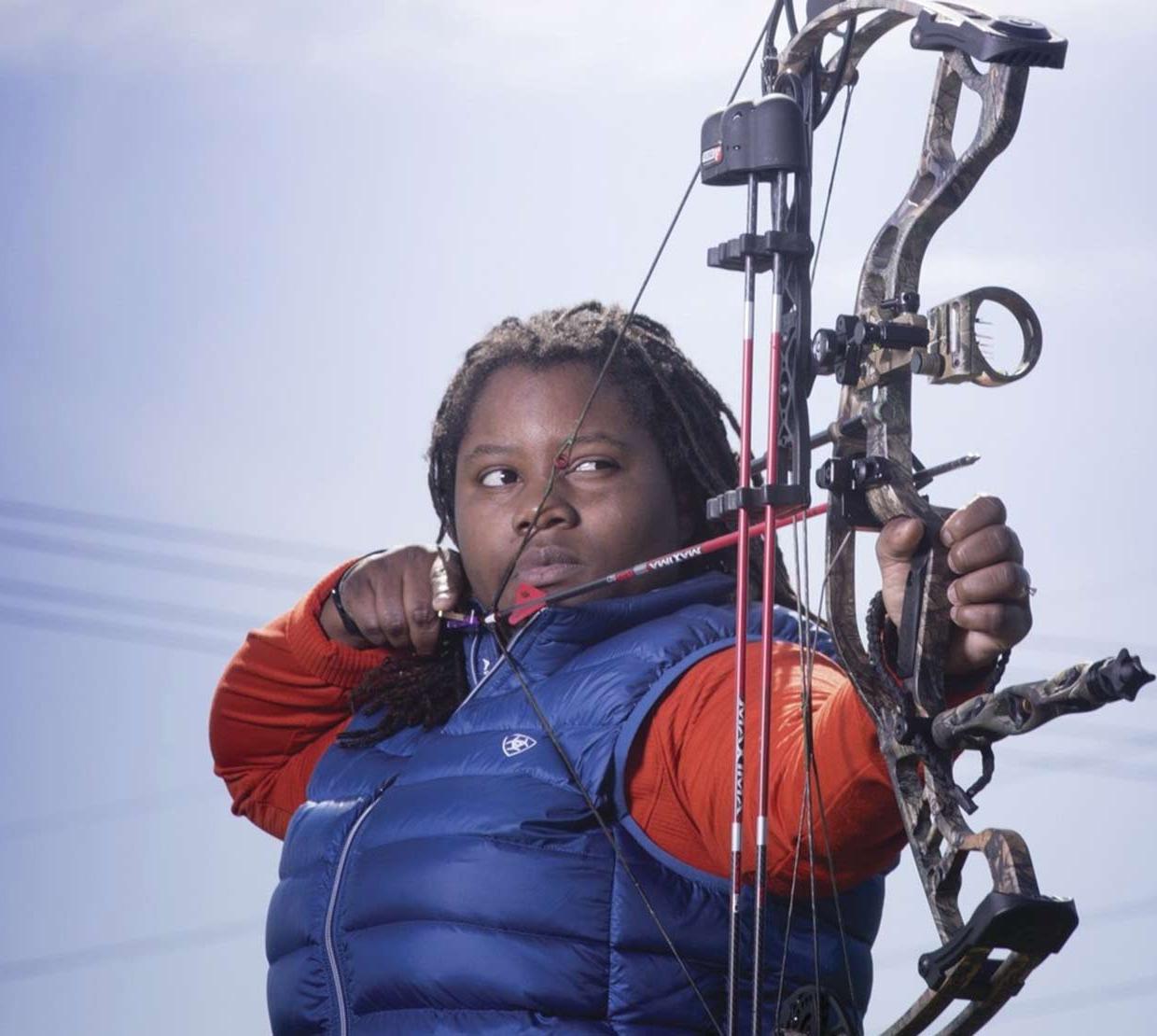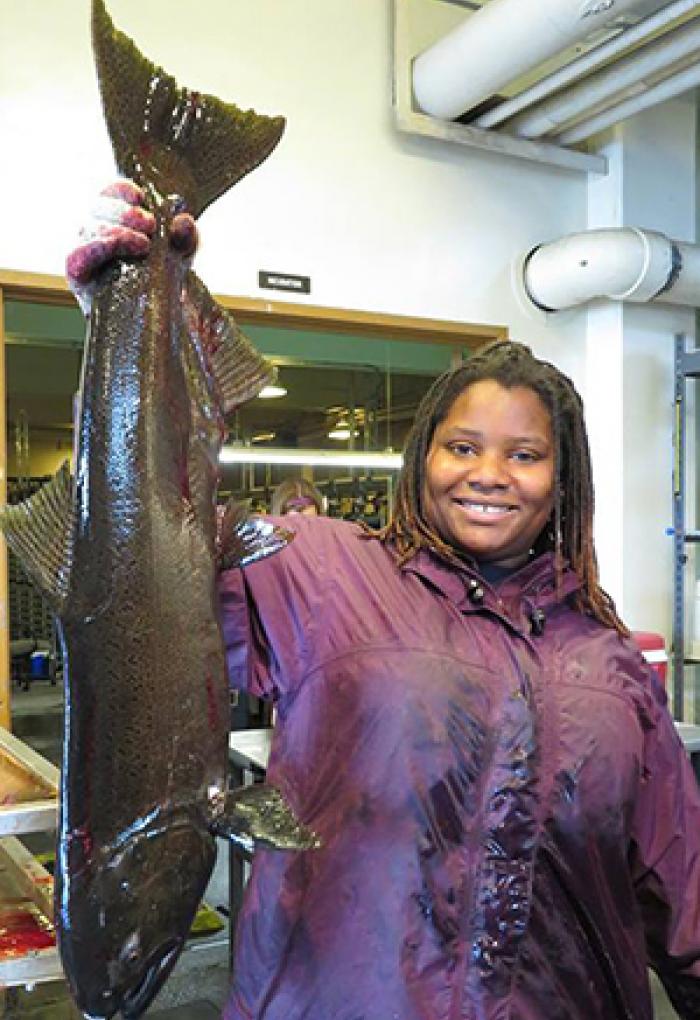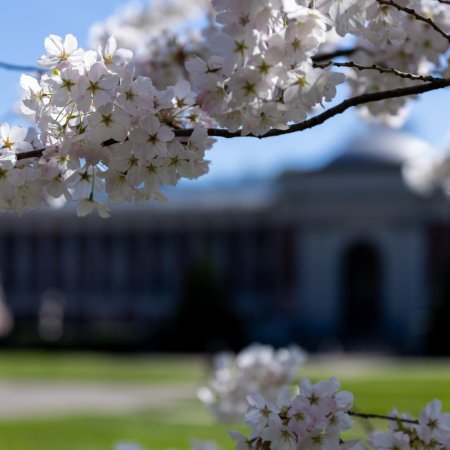She is the Vice President of SACNAS (Society for Advancement of Chicanos/Hispanics and Native Americans in Science) at Oregon State. She is the co-founder and Coordinator of the Graduate Student Ambassador Program and the Education Chairperson of NAACP (National Association for the Advancement of Colored People) in Corvallis.
During her two-year term as an ambassador for NBGSA and Oregon State, Hams will take on the responsibility of hosting a national conference for graduate and undergraduate students at OSU. She plans to hold the conference the summer of 2019 and use her connections with various educational institutes in the Pacific Northwest to invite students for the conference.
Hams has already racked up substantial and impressive achievements as a scientist. Her research article on new experimental methods to study otoferlin—a protein associated with human deafness—was recently published in the highly prestigious and selective science journal, Proceedings of the National Academies of Sciences (PNAS). The article was co-authored with her advisor Dr. Colin Johnson, biophysicist Dr. Weihong Qiu and former biochemistry doctoral student Murugesh Padmanarayana.
Hams, who completed her undergraduate studies at the University of Missouri, credits her success as a scientist to each and every research experience she underwent on her academic journey, beginning with several Research Experiences for Undergraduates (REUS) programs to her current training in cutting-edge molecular biophysics methods as an OSU graduate student.
The Washington state native is about to complete a highly selective 12-week summer internship at the Idaho Fish Health Center, part of U.S. Fish and Wildlife Service, in Orofino, Idaho, where she is developing a non-lethal diagnostic assay to detect for pancreatic necrosis virus in salmon.
Finding her identity
Hams is outspoken and passionate about her role as a peer mentor and champion of diversity on campus. She is closely involved with nationally prominent organizations dedicated to diversity, STEM, racial justice and civil rights.
But it took a few years for Hams to discover her mission.
She arrived at OSU to pursue a Ph.D. in 2012, but it wasn’t until 2016 that she was able to connect with like-minded individuals and find her voice by engaging with several diversity and outreach groups on campus.
“That’s how long it took me to find my voice and identity in STEM. I am the first one in my family to attend college and get a Ph.D. and I felt invisible for a long time,” said Hams.
Hams is keenly interested in supporting efforts to increase recruitment and retention of underrepresented minority graduate students in STEM programs at OSU. Her own experience of finding an internship, Hams asserts, testifies to the value of academic development groups such as SACNAS and MANNRS (Minorities in Agriculture, Natural Resources, and Related Sciences), that empower and unstintingly support minority students in STEM fields.
“I discovered my sense of purpose by going to the SACNAS conference in Long Beach last year,” said Hams. “That’s how I met the OSU president of SACNAS. Then I came to know Wanda Crannell, faculty advisor to SACNAS and MANNRS as well as others through my role as a member of the College of Science Diversity Committee.”
Through her rapidly evolving network, Hams got connected with the Black Graduate Student Association, NAACP (thanks to OSU Sociology Professor Dr. Dwaine Plaza), MANNRS and SACNAS. To her delight and amazement, she found that the more she engaged with the community, the more opportunities she found to thrive as a research scientist.
While on a tour for MANNRS and SACNAS students at a forensic lab in Ashland, Oregon, Hams met a recruiter from the Fish and Wildlife Service. In a wide-ranging discussion, he covered the intricacies of preparing a resume for federal jobs and internships, elevator pitches, finding available positions as well as pay and benefits.
Excited and inspired by what she heard, Hams asked the recruiter what she ought to highlight on her resume for a federal internship and he offered his expertise. The experience helped Hams land a summer internship at the Fish and Wildlife Service.
Hams' internship is part of the U.S. Fish and Wildlife Service's (USFWS) prestigious Directorate Fellowship Program (DFP). Apart from indulging her love for natural resources and research, the internship offers Hams yet another attractive benefit—it can lead to a job offer. According to its website, USFWS may directly hire a DFP Fellow after successful completion of the fellowship program and his or her degree requirements.
“I am pretty sure the reason I got this important professional opportunity is because of my affiliation with organizations such as MANNRS and SACNAS. The point I am making is that SACNAS and MANNRS present invaluable networking opportunities for underrepresented minority students that one won’t get just by being in the lab,” stated Hams. “We need to have more support for such organizations.”
Hams’ conviction is borne out by studies which show that mentoring and outreach programs for underrepresented minority students during postsecondary education help to increase STEM diversity and contribute to a competitive 21st century workforce. According to an American Association for the Advancement of Science publication, outreach programs in colleges and universities are just as important as K-12 STEM education programs: “If we put children on track to go to college in STEM only to be discouraged when they get there, it’s not a good return on our investment.”
Hams is very grateful to her advisor, Biochemistry and Biophysics Associate Professor Colin Johnson, for supporting her interest in professional development and outreach as well as for helping her find the many avenues on campus to support her career goals.
The young scientist dedicates tremendous effort and time to peer mentorship for STEM graduate students. She has helped create a Graduate Student Ambassador program in the Graduate School at OSU. Hams and other students speak about what it is like being in graduate school to talented, potential STEM graduate students at national conferences and other venues in Oregon and beyond.
She has also given talks about life as a graduate student in science to minority students in community colleges in Seattle, at the LSAMP (Louis Stokes Alliance for Minority Participation) national conference, the STEM Leaders Program on campus and the Black Students Success Symposium at Portland State.
“My main motivation for doing all this is to see more minority graduate students at Oregon State. I want to show them that there is a support system in place here so that they don’t struggle as much as I did in my early years as a graduate student,” explained Hams, who will be completing her Ph.D. in December 2017.
A gifted scientist with a passion for social justice, Hams is brimming with ideas and optimism for the future. “I feel I can do whatever I want with my Ph.D. The world is mine.” One couldn’t agree more.





